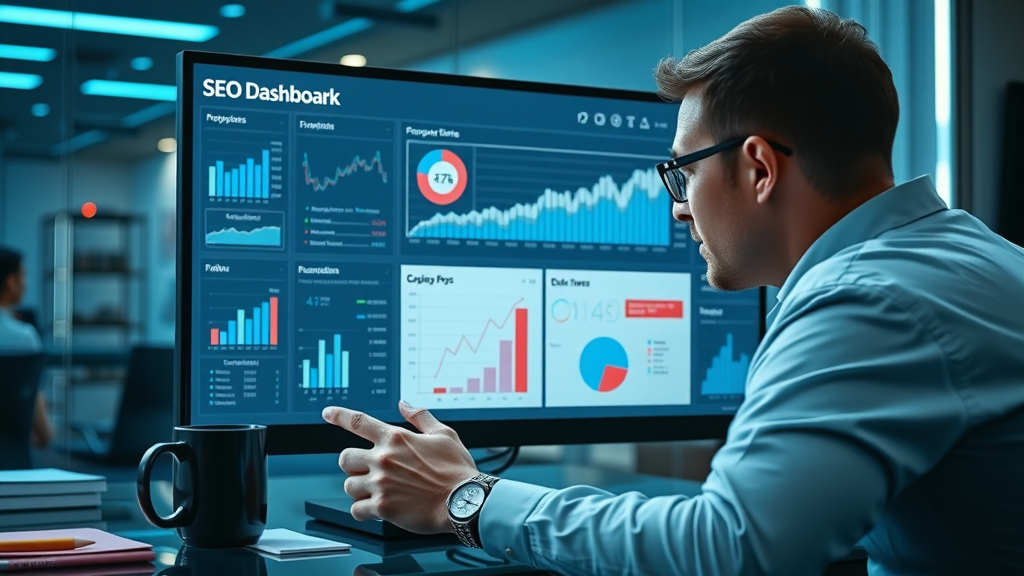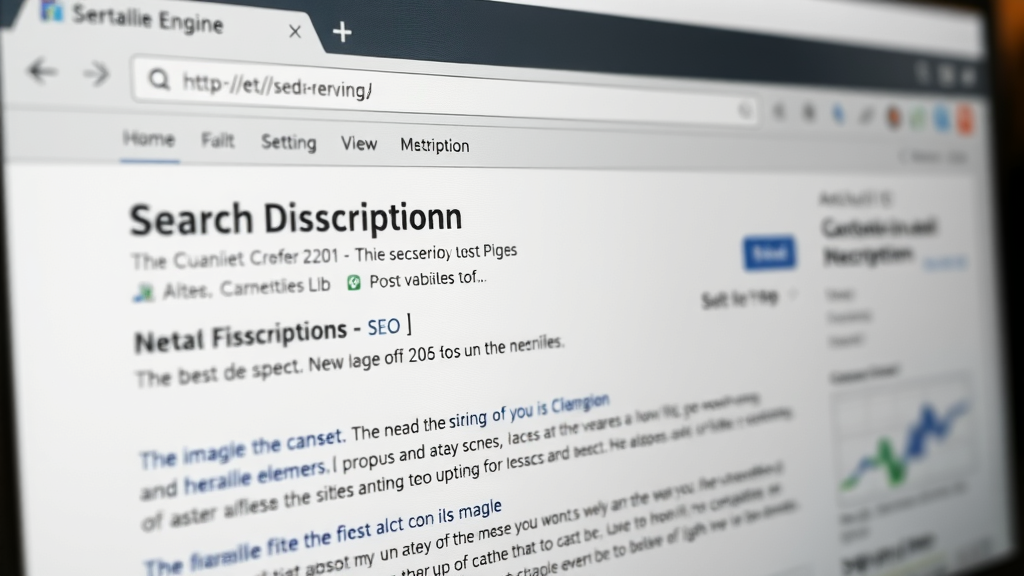Did you know that over 90% of online content gets no organic traffic from Google? If you're frustrated by stagnant rankings and invisible web pages, you're not alone. SEO content optimization is the game-changer between being lost on page five and dominating the search engine results page. This guide uncovers the tactics industry leaders use to create content that not only impresses algorithms but wins over your audience and transforms your marketing strategy forever.

Why SEO Content Optimization Matters: Startling Statistics and Unconventional Facts
- Did you know that over 90% of online content receives no organic traffic from Google? This article reveals how effective seo content optimization can transform your rankings, visibility, and business impact.
The vast majority of digital content never sees the light of day on Google search , despite hours poured into its creation. This isn’t due to bad luck—it’s a direct result of poor content optimization . Search engines like Google rely on hundreds of ranking factors to measure quality content, rewarding only those pages that align with both user intent and technical criteria. Brands that learn to optimize their content effectively consistently outperform competitors and secure valuable positions in featured snippets and on the coveted first page. If you're serious about capturing organic traffic, understanding and leveraging the mechanics of SEO content optimization is critical for sustained online success.
Achieving Search Engine Excellence Through SEO Content Optimization

- Learn how search engine algorithms evaluate content optimization, and discover actionable ways to align your website with ranking factors and optimized content best practices.
Attaining peak visibility on the search engine results page starts long before you hit “publish.” Search engine algorithms are engineered to reward optimized content that closely matches search intent, integrates primary and secondary keywords, and follows best practices in site structure and meta data. Using robust seo tools and understanding how to strategically create content ensures every page resonates with both users and algorithmic metrics. By consistently applying proven optimization tactics—such as internal linking, meta description refinement, and topical depth—you lay the groundwork to rapidly improve your engine ranking and achieve long-term marketing goals.
Embracing a strategy-first mindset is essential for search engine optimization . Carefully planned and optimized content stands a much better chance of appearing in featured snippets, increasing brand authority, and capturing high-quality leads. The result? Greater organic traffic , better conversion rates, and a sustainable lift in business growth.
What You'll Master by Applying SEO Content Optimization
- Understand and apply advanced content optimization strategies
- Identify key search engine ranking factors
- Craft optimized content that targets featured snippet opportunities
- Build a robust marketing strategy anchored in search engine optimization
- Develop skills to efficiently create content for maximum reach
By implementing these lessons, you will develop an in-depth grasp of how to tailor content for both users and search engines. This includes learning advanced keyword research, structuring headings for featured snippet visibility, and aligning your marketing strategy with measurable search objectives. With each optimization, you'll strengthen your site’s position in the search engine ranking hierarchy and unlock new growth opportunities.
Core Principles of SEO Content Optimization: Search Engine Insights
How Search Engines Interpret Optimized Content
- Algorithmic content factors
- User intent and keyword integration
- E-A-T for content optimization
Modern search engines have evolved far beyond simple keyword matching. They analyze content for algorithmic factors like on-page signals, natural language processing, and E-A-T (Expertise, Authoritativeness, Trustworthiness). To maximize your search engine optimization returns, you must anticipate what the platforms value: in-depth topical coverage, logical flow, and the presence of relevant keywords where users and bots expect them. Integrating user intent into your optimized content is crucial—when you thoroughly answer the questions users actually search for, you establish your content as the premier resource for a given topic.
Embedding these signals not only helps you rank high on engine results pages, it also future-proofs your content against algorithm changes. Search engines continually refine their ranking factors, so reinforcing trust and delivering genuine value in every article or landing page is essential. When crafting content, always strive to balance the needs of the reader with the technical requirements of search engine results.
Critical Elements of High-Quality SEO Content

- Importance of meta description
- Proper use of headings and keywords
- Structuring content for featured snippet visibility
To produce high-quality SEO content that stands out, start by mastering the details. A compelling meta description entices clicks from the search engine results page by offering a concise, relevant summary of your page. Clear and descriptive headings structure your content for both readers and bots, reinforcing the topical focus with strategic keyword placement. To further optimize your content for featured snippet opportunities, use bullet points, lists, and concise answer boxes that provide instant value for users and search engines alike.
Additionally, effective formatting—such as breaking up text with visuals, integrating internal links, and using short paragraphs—improves user experience and keeps bounce rates low. The goal is to optimize your content so it is easily scannable, quickly delivers answers, and encourages deeper engagement through thoughtful navigation and logical organization.
Crafting Optimized Content: Strategies for Effective Content Creation
Content Planning for SEO Content Optimization
- Keyword research and competitive insights
- Topic clustering for search engine optimization
- Leveraging user intent in content creation
Successful content creation begins with in-depth keyword research . Using a reputable seo tool helps you uncover high-impact search terms and analyze competitors’ strategies, identifying gaps your content can fill. Group related topics into clusters, ensuring all supporting pages interlink and reinforce the main pillar topic—this increases the relevancy signals sent to search engines. When you align your content optimization plan with the actual questions and concerns of your audience, you boost the likelihood that your pages satisfy both search engine algorithms and human visitors.
Topic clustering also assists in building content depth and breadth, addressing the full scope of audience needs around your target keyword . By segmenting content by intent—informational, navigational, transactional—you create a content marketing funnel that reflects user journeys and drives higher conversions.
Step-by-Step Guide: How to Create Content that Ranks
- In-depth content optimization walk-through
- Writing compelling introductions
- Optimizing for readability and engagement
Begin by researching the search engine results page for your target keyword , noting the type of content and average length of high-ranking pieces. Structure your draft to include a captivating introduction that addresses the user’s problem or query, followed by clearly defined headings and sections. Integrate your primary and secondary keywords naturally throughout the body. Enhance readability by using short paragraphs, bullet-lists, and visual elements. End with a strong call to action or summary, prompting users to take the next step.
Remember to regularly test and refine your methods with analytics and feedback. Employ tools like search console to measure performance and adjust your strategy for better engagement and conversion.
Essential On-Page Factors for SEO Content Optimization Success
Designing Meta Descriptions and Titles for Search Engine Optimization
- Meta description formula
- Optimizing titles for click-through rates
Your meta description is often the determining factor for whether users click through from the results page . An effective formula includes the focus target keyword , a clear promise or solution, and a call-to-action—all within 155-160 characters. Likewise, ensure your page titles are specific, relevant, and accurately describe the page’s topic while enticing users to click.

Optimizing these elements not only improves search engine ranking but also fosters trust in your brand. Avoid “clickbait”—instead, be concise and genuine, ensuring titles and descriptions match the page’s real content.
Structuring Content for Featured Snippet Opportunities
- Table formatting
- Bullet points and lists for fast answers
Featured snippets occupy a prestigious spot at the top of the search engine results page . To win these placements, use concise answers, bullet lists, and formatted tables that directly address common queries. Tables can succinctly organize key information, while lists help search engines quickly parse and extract answers for user questions.
Positioning your content for snippet eligibility not only raises exposure, but it also boosts click-through rate and authority in your niche.
Internal Linking as a Content Optimization Booster
- Linking strategies
- Anchor text best practices
Internal linking is a powerful yet often overlooked aspect of content optimization . It helps distribute link equity, guides users toward related articles, and reinforces topical relevance for search engines. When creating internal links, use descriptive, keyword-rich anchor text that gives users and algorithms context about the linked page.
Well-planned internal linking structures can drastically improve your search engine rankings by driving engagement and extending user sessions—all while supporting the overall marketing strategy of your site.
Integrating Content Optimization into Your Marketing Strategy
Aligning Content Creation with Business Goals
- Setting measurable objectives
- Audience and funnel mapping
- KPI tracking for long-term impact
Effective SEO content optimization doesn’t end at producing high-ranking articles. You must tie content creation directly to business outcomes by setting measurable objectives—such as increased traffic, lead generation, or sales conversions. Map your content to different stages of the marketing funnel, ensuring each piece plays a strategic role in guiding users from awareness to action.
Regularly review KPI metrics, like bounce rates and conversion percentages, to fine-tune your approach. When your marketing strategy aligns seamlessly with content creation, you realize the full potential of your search engine optimization efforts.
Continuous Optimization for Long-Term Search Engine Performance

- Periodic content audits
- Updating old content for search engine optimization
SEO is not a one-time task. Schedule periodic content audits to identify pages with declining performance or outdated information. Use google search console and analytics to spot opportunities for content refresh or expansion. Updating old posts with new data, enhanced media, and stronger keyword optimization dramatically improves their rankings and draws renewed organic traffic.
This ongoing commitment to content optimization ensures your site remains relevant and authoritative, maximizing long-term search engine results and supporting continuous business growth.
Advanced SEO Content Optimization: Tools and Best Practices
Automation and AI in Content Optimization
- SEO tool recommendations
- AI-powered content audits and suggestions
The new frontier of seo content optimization revolves around automation and artificial intelligence. Using advanced seo tools —like SurferSEO, SEMrush, or Clearscope—automates competitive research, keyword suggestions, and meta optimization. AI-powered content audits highlight weak spots, outdated references, and structural gaps with precision.
Embracing these innovations frees time to focus on creative strategy and crafting truly optimized content that appeals to users and search engines alike.

SEO Content Optimization Checklist for 2024
- On-page, off-page, and technical factors
- User experience improvements
- Accessibility enhancements
| Factor | Description |
|---|---|
| Keyword Placement | Focus keyword in headings, meta, body |
| Meta Description | Concise, relevant summary |
| Internal Linking | Strategic anchor text linking |
| Mobile Optimization | Responsive design and fast loading |
| Featured Snippet | Structure content for answer boxes |

Expert Insights: Quotes from SEO Industry Leaders
"Optimized content is as much about audience satisfaction as it is about satisfying search engines." — Rand Fishkin
"SEO content optimization is the bridge between creativity and discoverability." — Aleyda Solis
Common SEO Content Optimization Mistakes and How to Avoid Them

- Keyword stuffing
- Ignoring meta descriptions
- Thin and duplicate content
- Poor mobile experience
Common errors like keyword stuffing can lead to penalties instead of higher rankings. Overlooking meta description optimization also means missing out on clicks from the search engine results page. Avoid thin, duplicate, or low-quality content—search engines value unique, in-depth material that satisfies user intent. Equally important is ensuring a seamless mobile experience ; with the majority of traffic now originating from mobile devices, unresponsive pages quickly lose visibility and traffic.
Routinely audit your pages for these pitfalls and use best practices to maintain a high standard of content optimization and user engagement.
Real-World Success Stories: SEO Content Optimization Results
- Case study: Increased traffic by 120% in 6 months
- Local business ranking from page 5 to #1
- Startup boosted leads via optimized content creation
Real businesses have experienced dramatic improvements through strategic SEO content optimization. One SaaS firm boosted organic traffic by 120% in just six months by updating old articles, refining keyword targeting, and winning featured snippets. A local business jumped from obscurity on page five to top local search results by refining meta data, adding local signals, and leveraging internal linking. Early-stage startups have doubled their leads simply by adopting structured content creation processes and focusing on user intent throughout their marketing strategy.

People Also Ask: Insights on SEO Content Optimization
What are the 4 types of SEO?
- The four types of SEO include on-page SEO (improvements made directly within your website content), off-page SEO (external factors such as link building), technical SEO (site and server optimizations that help search engine spiders crawl and index your site), and local SEO (improving search visibility for local businesses).
Can I do SEO by myself?
- Yes, with the right seo content optimization knowledge, tools, and dedication, you can implement many effective SEO strategies yourself. However, advanced techniques may benefit from professional expertise.

What is the 80 20 rule of SEO?
- The 80/20 rule in SEO suggests that 80% of your results come from 20% of your efforts. Focusing your seo content optimization on high-impact strategies—like optimizing best-performing pages and targeting intent-driven keywords—yields the most significant gains.
What is an example of content optimization?
- A common seo content optimization example is revising an old blog post by adding new keywords, updating information, restructuring headings, and improving meta description to boost search engine ranking and user engagement.

Comprehensive FAQs on SEO Content Optimization
-
How often should I update my content for optimal SEO results?
Frequent updates—at least quarterly—ensure your content stays current and aligned with emerging search engine trends. Refresh statistics, check for outdated links, and expand answers to cover new user queries. -
What roles do images and media play in optimized content?
Visual elements improve user engagement, support accessibility, and provide extra signals to search engines when alt text is well-optimized. Thoughtfully chosen images also clarify complex ideas and break up long text. -
How does search intent connect to content creation?
Understanding user intent guides your keyword selection, storytelling style, and content depth, ensuring each piece truly addresses what visitors are searching for. -
Why is featured snippet targeting important?
Winning a featured snippet captures premium real estate on the results page, increases clicks, and establishes you as the go-to resource in your field.
Action Steps for Winning at SEO Content Optimization
- Audit your existing content for optimization opportunities
- Create content using keyword and intent-based research
- Implement on-page and technical SEO best practices
Ready to Transform Your Results? Put Effective SEO Content Optimization Strategies into Action Now
- Don't let content optimization challenges hold you back. Use these proven steps and insights to create search engine-friendly, business-boosting optimized content today.
Start a content audit, leverage these optimization tactics, and watch your search engine rankings soar!
To enhance your understanding of SEO content optimization, consider exploring the following resources:
-
“Content Optimization: 14 Effective Tactics for Better Results” ( semrush.com )
-
“The complete guide to optimizing content for SEO (with checklist)” ( searchengineland.com )
These articles provide comprehensive strategies and actionable steps to improve your content’s search engine performance. By implementing their recommendations, you can effectively address common SEO challenges and enhance your online visibility.
 Add Row
Add Row  Add
Add 


Write A Comment